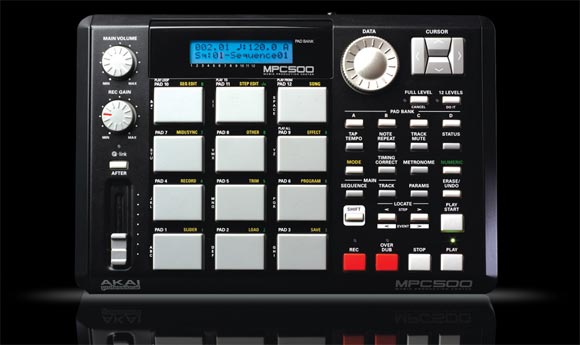Real sequencers and drum machines force you to approach groovemaking with a different technique than software. I discovered this completely by accident when I invested a few hundred bucks in a tiny Alesis MMT-8 scratchpad sequencer. The Alesis and I got along famously, to the point that it became my songwriting tool of choice. It was only when I needed more than 8 tracks or fancy editing that I powered up a computer.

Few manufacturers are willing to invest in the development of a new hardware sequencer these days. That’s what makes Akai’s MPC500 special — it’s the latest (and smallest) incarnation of Akai’s renowned rhythm sequencer family.
Alas, it has several notable flaws. The baby MPC’s compact size forced Akai to remove 4 touch sensitive drum pads, leaving us with only 12 sounds per bank. That’s not a showstopper, but it will have an impact on the complexity of your grooves. Second, it has a minuscule old-school (and not in the good sense) 16 x 2 character LCD display. This means that the front panel had to be tweaked to “dumb it down.” There’s no reason to cheap out on something as important as the user interface, especially when off-the-shelf graphic LCD displays can be had for around $30 wholesale, even in relatively small quantities.
And while we’re at it, why not move beyond the “rhythm sampling” paradigm and include some serious synthesis and sample-looping capability under the hood? The sound generation hardware is already in the box, the sequencer is already there, and its not like Akai would be taking sales away from their (now deceased) line of hardware samplers.
But — when all is said and done — the biggest roadblock for potential purchasers looks to be the price. Harmony Central reports a list of $1299, and the street price seems to be around $800. That’s laptop territory, guys.
Akai MPC500 Music Production Center, Yo! (via Tom at Musicthing)